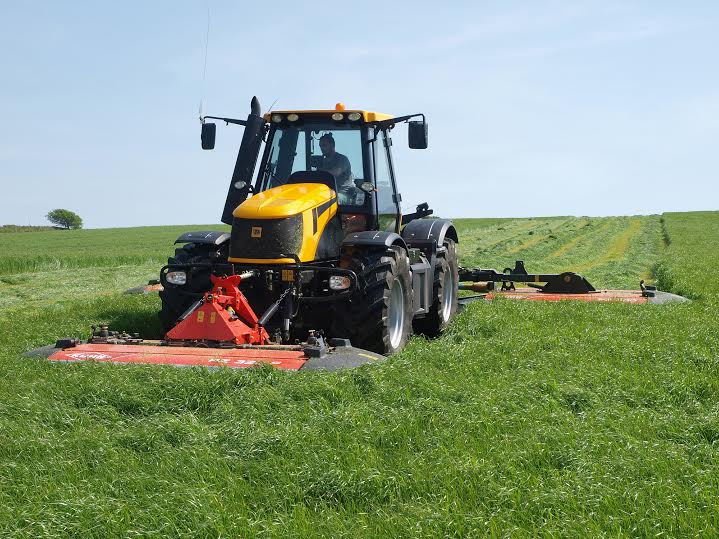
Forage-based dairying underpinned by quality grass silage offers a majority of Scottish milk producers a profitable future and a solution to volatile market conditions.
This was the message from Germinal at ScotGrass, where the company pinpointed higher milk from forage as a key parameter in better performing dairy units and stressed that opportunities to improve existed within current set-ups without major investment.
"It is clear from many costings reports that the dairy farms in the highest performance bracket are those making most from forage," pointed out Germinal area sales manager Iain Eadie.
"Grass silage will be the most important element of the forage diet for many, so improvements here will have the greatest impact most quickly.
"First and foremost, it is vital that silage leys contain the best quality ryegrasses, but whatever the state of your swards going into this current season, there is still a lot that can be done to maximise the feed value of grass silage.
"Simply cutting at the optimum stage of growth can mean a difference of several D-value points, raising the ME of the silage and boosting the milk production potential.
"Aiming for quality not quantity will more than likely mean lower bought-in feed costs next winter.
"It’s then important to apply attention to detail to every aspect of the silage making process, whether clamped or baled, to ensure the maximum possible retention of feed value."
Improving the raw material for even better returns
Whilst these measures should help secure better quality grass silage this season, Iain Eadie added that improving the raw material would generate even better returns in future for a large majority of dairy farmers.
"Reseeding rates for UK grassland are far too low to maintain swards at their optimum performance levels," he revealed.
"We estimate current reseeding rates are at around 2-3% each year, which means many leys are being expected to perform well beyond the 8-10 years that we can expect sown species to remain, even under the very best management conditions.
"So in many cases, silage leys will contain large proportions of weed grasses, which yield less, are of lower quality, and do not respond as well to fertiliser as modern ryegrasses.
"Investing in more regular reseeding may seem like an added cost, which few will feel they can justify in the current climate, but the payback from grassland that is capable of delivering far higher yields of better quality, higher intake forage, will be achieved very quickly.
"Furthermore, when making the investment in reseeding, be sure you maximise the value by selecting the best available varieties from the independent SRUC Recommended List.
"Choose the best varieties for the purpose, and consider details like compatible heading dates within the mixture, as these small points can make a significant difference.
"This short and medium term focus on grass silage quality is something that is within the scope of the majority of dairy farmers and, for a great many, could make a significant difference to bottom line profitability.
